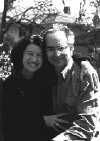| 1959 |
First case of HIV infection in Africa. |
| 1960's-1970's |
HIV is assumed to have spread from Africa to other countries possibly by tourist
and workers. |
| 1969 |
First known case of HIV in United States. |
| 1978 |
People in Central African and Caribbean countries begin to appear in
European hospitals with rare infections. Meanwhile 2% of gay men in San
Francisco have become infected with HIV due to donated blood. |
|
|
|
1981 |
An alarming rare cancer Kaposis Sarcoma and Pnuemocystis Carinii
Pneumonia came up in healthy gay men. The disease is first called
"gay cancer". Later renamed to GRID ("gay–related immune
deficiency"). |
|
1982 |
The term AIDS (acquired immune deficiency syndrome) is used for the
first time. |
|
1983 |
Professor Luc Montagnier (Pasteur Institute France) announces the
discovery of a retro-virus (Lymphodenopthy – associated virus-LAV) that
could be cause to AIDS. |
|
1984 |
Dr. Robert Gallo claims he has discovered a retro- virus that could be
the cause to AIDS named HTVL-III. There was a clearly possibility that LAV
and HTVL-III were the same virus. |
|
1985 |
The FDA (US) approves the first HIV antibody test.
The first International Conference on AIDS is held in Atlanta.
 The
actor Rock Hudson died of AIDS on October 3rd 1985. He was the first major
public figure known to have died of AIDS. The
actor Rock Hudson died of AIDS on October 3rd 1985. He was the first major
public figure known to have died of AIDS.
|
|
1986 |
US Surgeon General Everett Koop publishes a report on AIDS. This calls
for sex education. |
|
1987 |
US Food Drug Administration (FDA) approved AZT as the first
antiretroviral drug to be used as a treatment for AIDS.
Ronald Reagan makes his first major speech on AIDS. |
|
1988 |
Trimetrexate was the first AIDS drug to be granted pre-approval
distribution status under the new Treatment IND regulations. Trimetrexate
was used to treat Pnuemocystis Carinii Pneumonia in AIDS patients who
cannot tolerate standard forms of treatment.
World Health Organization designates December 1st as World
AIDS Day. |
|
1989 |
The cost of AZT angered many people with the year supply for one person
costing $7,000. Burroughs Welcome lowers the price to 20%.
Various treatments for AIDS have been made. |
|
1990 |
 Ryan White died in the US due to hemophiliac infected with HIV through
the use on infected blood products. He had become well known a few years
earlier as a result of his fight to be allowed to attend public school.
Just a few months later Congress passed the Ryan White CARE Act. The aim
of the act was to provide grants to improve the quality and availability
of care for individuals and families with HIV disease. Ryan White died in the US due to hemophiliac infected with HIV through
the use on infected blood products. He had become well known a few years
earlier as a result of his fight to be allowed to attend public school.
Just a few months later Congress passed the Ryan White CARE Act. The aim
of the act was to provide grants to improve the quality and availability
of care for individuals and families with HIV disease.
|
 Kimberly Bergalis 22 year-old infected with HIV by her dentist during a
surgical procedure improper usage of Universal Precautions. Kimberly dies a
year later. Kimberly Bergalis 22 year-old infected with HIV by her dentist during a
surgical procedure improper usage of Universal Precautions. Kimberly dies a
year later. |
|
1991 |
America's leading medical and dental associations announced that HIV
positive doctors and dentists should warn their patients about their
infection status or give up surgery. CDC also recommended that infected
health care workers should be barred from certain procedures.
 Ervin Magic Johnson a professional basketball player announced that he
was HIV positive. He retired from basketball with the advice from
doctors. He also planned to use his celebrity status to educate
young people about the disease. Ervin Magic Johnson a professional basketball player announced that he
was HIV positive. He retired from basketball with the advice from
doctors. He also planned to use his celebrity status to educate
young people about the disease.
|
|
1992 |
The VIII International Conference was successfully held in Amsterdam
rather than in its originally planned in Boston due to the US travel
policies on HIV positive people.
The FDA approved the use of ddC in combination with AZT for adult
patients with advanced HIV infection who were continuing to show signs of
clinical or immunological deterioration. This was the first successful use
of combination drug therapy for the treatment of AIDS. |
|
1993 |
 |
 |
FDA approved the Reality Female Condom which offers women a barrier
product to protect themselves without having to rely on their partner.
Rudolf Nureyev, Russian ballet dancer and Arthur Ashe, tennis player
both die of AIDS. |
|
1994 |
AIDS had become the leading cause of death amongst Americans between
the ages of 25 and 44. 400,000 people in the United States had developed
AIDS since 1981, and over 250,000 people had died. |
|
1995 |
The FDA also during the year approved the use of Saquinavir, the first
of a new group of Protease Inhibitor antiretroviral drugs. They also
approved the use of 3TC in combination with AZT, and by the end of the
year Saquinavir had been authorized for use in combination with the
nucleoside analogue group of antiretroviral. |
|
1996 |
Magic Johnson returns to basketball. |
|
1997 |
FDA issued a final rule requiring labeling of latex condoms to contain
an expiration date based upon physical and mechanical testing performed
after exposing the product to varying conditions that age latex. |
|
1998 |
 Jonathan Mann, the first director of the Global Program on AIDS, died
in the crash of Swissair flight 111, along with his wife the AIDS
researcher Mary-Lou Clements-Mann. Jonathan Mann, the first director of the Global Program on AIDS, died
in the crash of Swissair flight 111, along with his wife the AIDS
researcher Mary-Lou Clements-Mann.
FDA approves Abacavir (trade name Ziagen) for the treatment of Human
Immunodeficiency Virus-1 (HIV-1) in adults and children. |
|
1999 |
Amprenavir, a new protease inhibitor for use in children four years of
age and older and in adults in combination with other antiretrovirals for
infection of HIV was approved by the FDA. |
|
2000 |
Kaletra, a protease inhibitor for adults and children greater than six
months of age with HIV receives approval by FDA.
FDA approves for Trizivir for the treatment of HIV in adults and
adolescents. |
|
2001 |
Viread (tenofovir disoproxil fumarate), Gilead Sciences, received
accelerated approval on October 26, 2001 for treatment of HIV-1 infection
in combination with other antiretroviral medicines. Viread is the first
nucleotide analog approved for HIV-1 treatment. Nucleotides are
similar to nucleoside analogs, and block HIV replication in the same
manner. |
|
2002 |
HIV/AIDS
education in schools in Sub-Saharan Africa has failed to effect behavior
change despite high levels of knowledge among primary and secondary school
pupils. The study concurred with
earlier findings by UNAIDS that showed dramatic HIV/AIDS increase among
girls aged 15-19 in most cities across Sub-Saharan Africa. |

